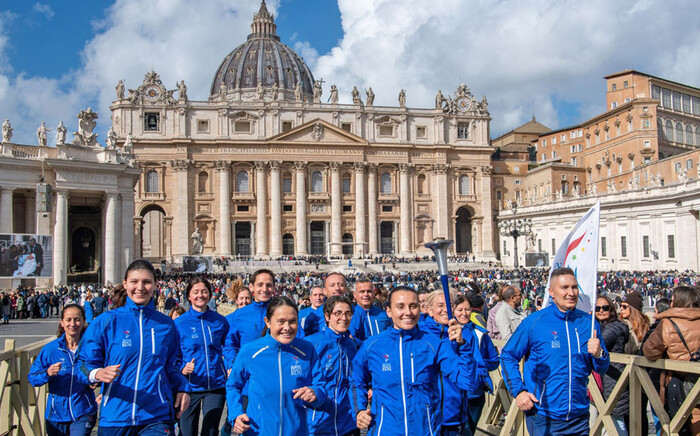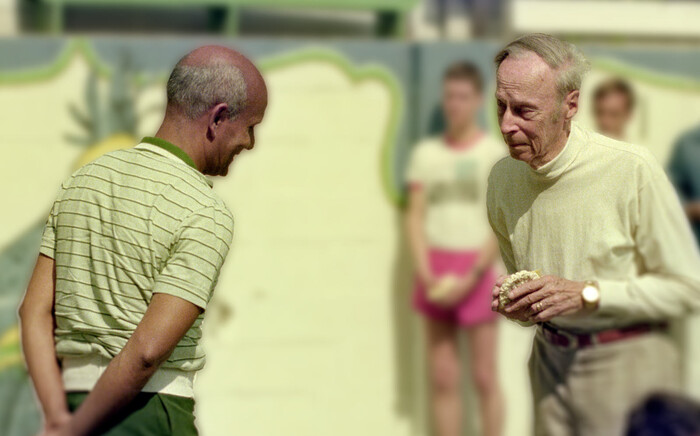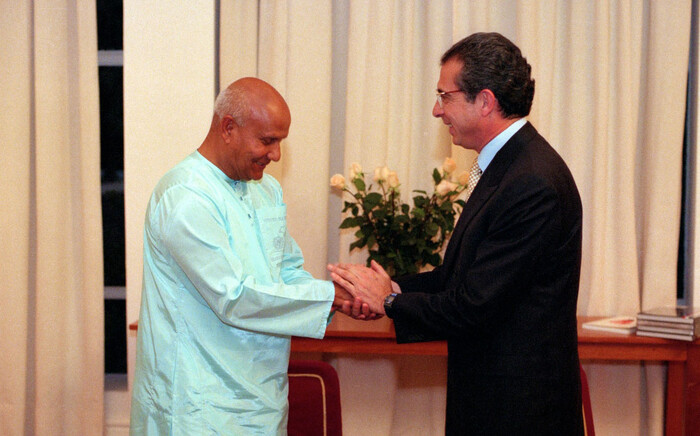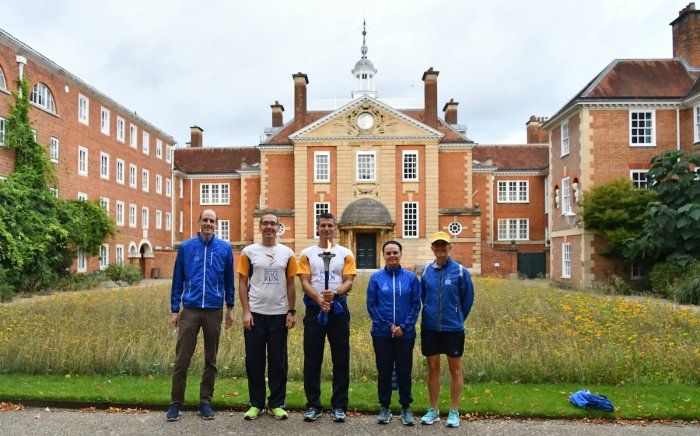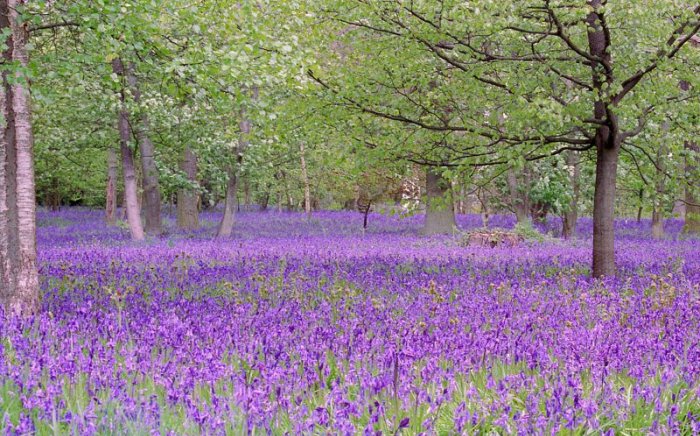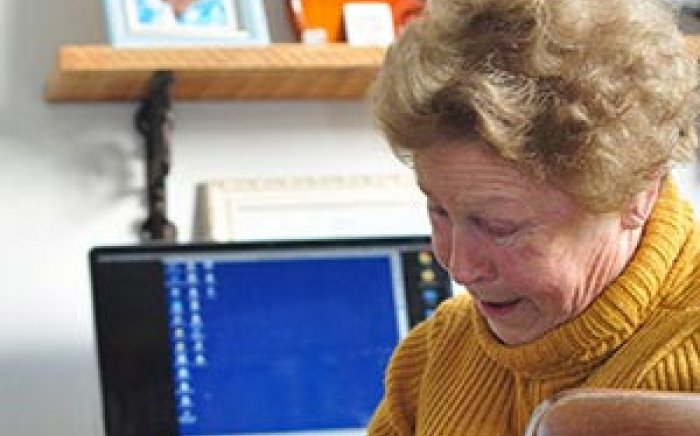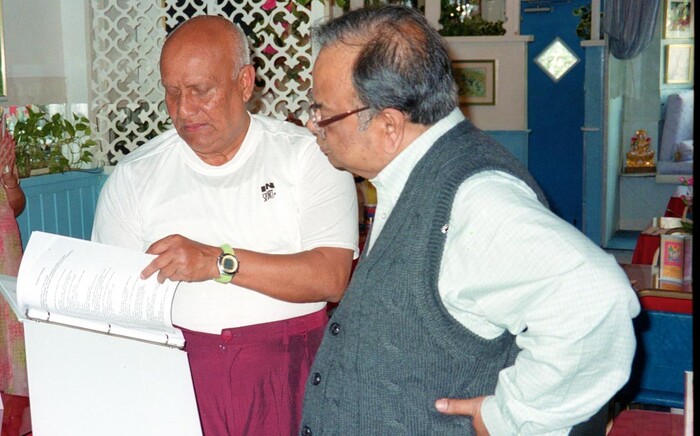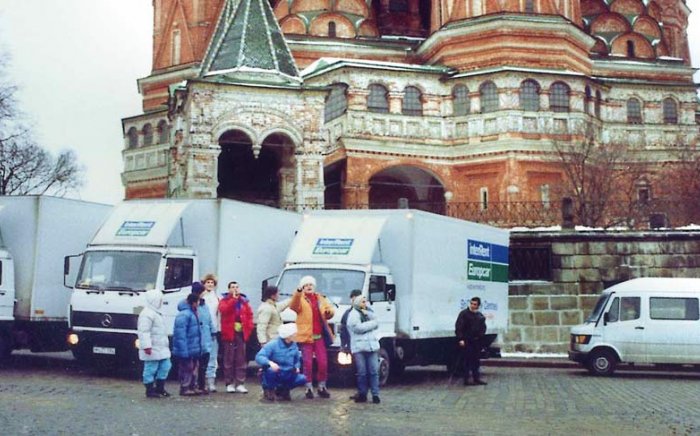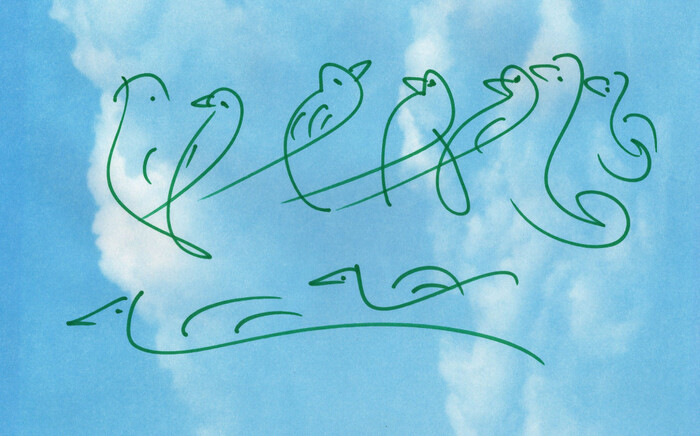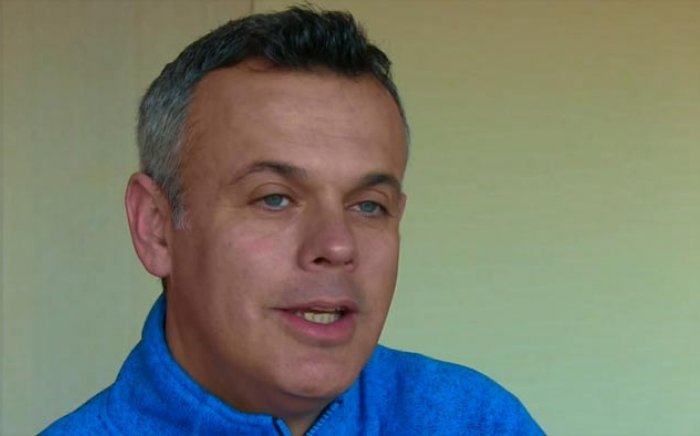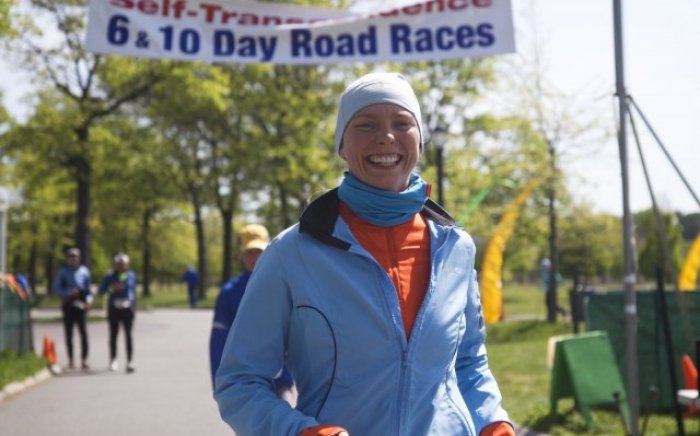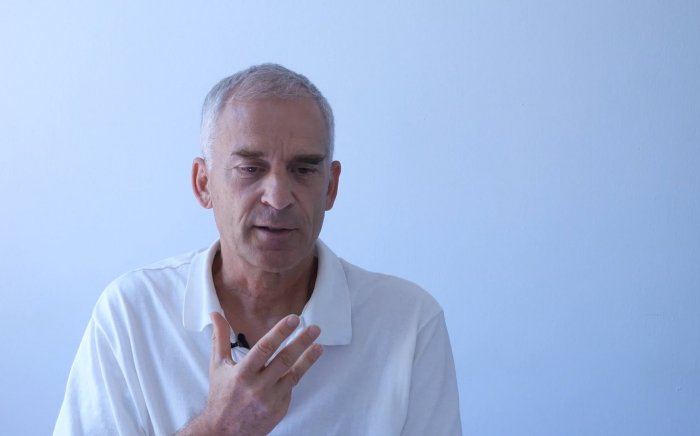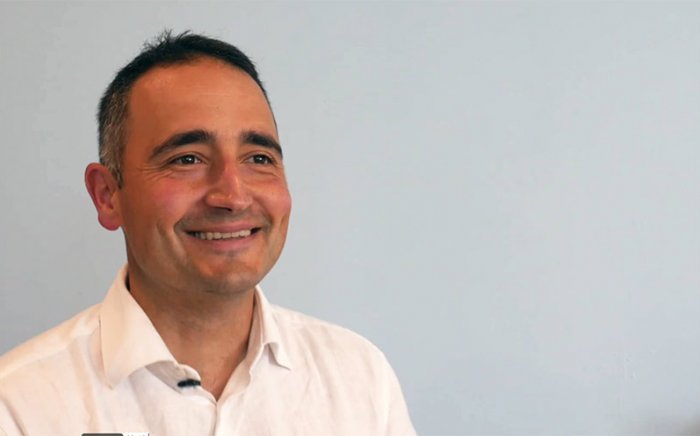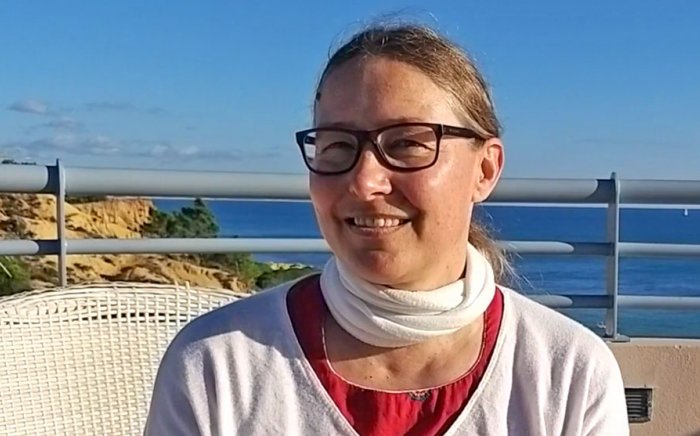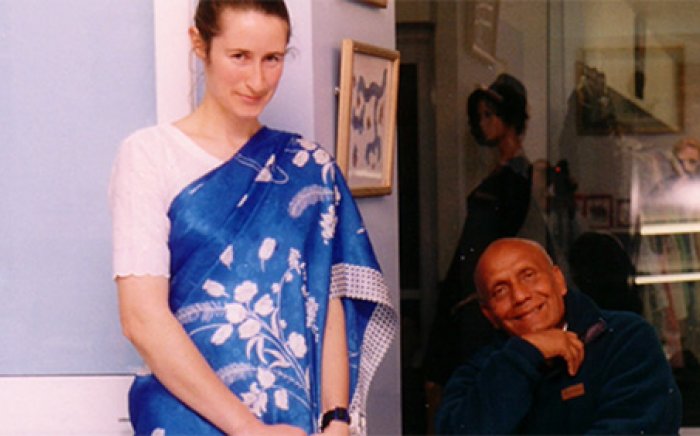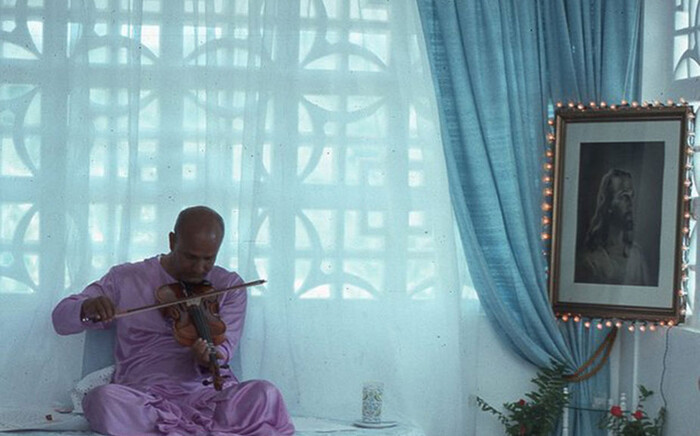12,000 people fill the main street of Pietermaritzburg at 5.30 am. 12,000 people in the cold darkness all stripped for action and twitching to be underway, to face the challenge for which each one of them has trained and dreamed and prepared for months or years. The air is electric. This is the greatest ultra-marathon in the world and here we stand, bouncing from foot to foot, minutes from its beginning. Suddenly from 12,000 throats there rises up the roar of the Zulu song Shosholoza:
Shosholoza
Ku lezontaba
Stimela siphum’ eSouth Africa
Wen’ uyabaleka
Wen’ uyabaleka
Ku lezontaba
Stimela siphum’ eSouth Africa
Move fast
on those mountains
train from South Africa.
You are running away
on those mountains
train from South Africa
– the song of the migrant workers of the old South Africa. It echoes up and rolls around the darkness above us, our cry of defiance to the pride of frightening distance that challenges us.
Then from vast speakers in the darkness there roars forth that tune, composed by a portly Greek, which has become the endlessly stirring anthem of all running, a piece of music which somehow from its iconic opening notes sums up all that is best in the great endeavour of running: the theme from Chariots of Fire.
Now the Zulu praise singer comes forward and begins his incantation, long performed before all great battles.
After that – 12,000 voices raised in the South African national anthem and then, in one of those special traditions that have built up over the years since 1921 when this race was first run – the traditions that add a mythical air to the race – the cry of a rooster rings through the air and the mighty roar of a cannon. And we are off! We are off – 12,000 individuals racing off into the darkness, a great melee of humanity charging away, all thought of pacing and distance lost in the mad joyous exuberance of running, a stampede of suddenly unleashed energy careening off on our endless journey.
*
There be three things which are too wonderful for me,
yea, four which I know not:
The way of an eagle in the air;
the way of a serpent upon a rock
the way of a ship in the midst of the sea;
and the way of a man with a maid.
What is it that makes this race the greatest in the world? There are three things, yea four …
First, cast your eyes about you. Twice I have raced the 127 km that circumnavigates the great white volcano of Taranaki. Both times my helper exclaimed afterwards of the awesome inspiration of the countryside and the view. Myself, I had been conscious of nothing but effort and had seen nothing but macadam and road-kill.
Here I would not make the same mistake. The sun rose – a giant red ball of flame behind the iconic silhouette of a thorn tree on the horizon. Alan Paton described the country though which we run – ‘There is a lovely road that runs from Ixopo into the hills. These hills are grass-covered and rolling, and they are lovely beyond any singing of it.’
Over on the left, as we run along a ridge, blue mountains stretch away into the distance, range upon range of African peaks, each a more muted shade of blue. To our right the green slopes of the Valley of A Thousand Hills – here cultivation, there open grassland, here small traditional settlements, a plume of smoke and a few goats roaming by…
Secondly – your fellow runners. There is a bond between people who undertake such an endeavour that is deeper than most. In this race that bond is continually expressed. Each runner has a number not only on his front but also on his back, and it has not only numerals but the runner’s name as well. Added to this, local runners – who make up the large majority – have green numbers: international competitors have a blue number. How many times was I greeted in that unmistakable South African accent, ‘Hey Baaahnaby, welcome to Sath Aaahfrica’? How many words of encouragement and welcome and camaraderie did I receive from my fellow runners? How many conversations with runners, black and white, who had run this race many times over the years?
I did make one mistake: I pinned a small New Zealand flag on the back of my singlet. This did illicit friendly comments about New Zealand – quite a few ‘Go Kiwi’s, a few queries about whether I was staying for next week’s rugby game between the All Blacks and the Springboks, a conversation with a man who had married a New Zealander the week before. But one must admit that those were about 25% of the comments I received. The other 75% mostly went something like – ‘Hey, Go Ozzy!’, ‘Keep it up Australia’, and endless comments on the previous day’s rugby game between Australia and South Africa – ‘Shame about the rugby,’ with a laugh, or ‘Yesterday we were enemies but today we are all Comrades.’
There are those in New Zealand who believe we need a new flag to reflect the country less as a former British colony and more as a young Pacific nation. Actually, in my opinion it is time the Australians designed a new flag. They could have a big blank red one reflecting the fact that their country is fast racing towards a parched uninhabitableness. Whatever it be, something more distinct from our own splendid standard would certainly be less confusing for the citizens of the rest of the world.
At least as I got slower and slower and more incompetent-looking as the race proceeded I was disgracing the land of marsupials and under-arm bowlers* and not the pristine reputation of God’s own country.
* Explanation for non-antipodeans:
On February 1, 1981 in a cricket match between New Zealand and Australia there occurred the most despicable act to have ever marred a sports event. With one ball left to be bowled, New Zealand needed six runs to tie the match. The Australian bowler, Trevor Chappell, at the order of the captain, Greg Chappell, his brother, bowled that last ball underarm – rolling the ball along the ground so that the New Zealand batsman, Brian McKechnie, could do nothing more than pointlessly block it. The game ended with an Australian ‘victory’ as the New Zealand batsman threw his bat on the ground and walked from the field of play. Until the day in 5 billion years’ time that the Sun expands and engulfs the Earth, every Australian will be tainted in the mind of every New Zealander with the odour of that disgraceful act.
Thirdly, there was the support from the sidelines. It seemed we ran through a 90 km long party. Everywhere there were people standing or sitting by the road: picnicking, clumped around the barbecue – or ‘braai’ as they say in South Africa – or just watching and clapping and cheering.
To be here on this day is to see South Africa at its best. Probably half of the runners are white; half black. The crowds are equally diverse. Small, springbok-like Afrikaner women in fashionable skirts, their pierced belly buttons sparkling in the bright African sun, stood cheering next to women swathed from head to toe in black fabric – a slit for eyes the only sign of skin as they too watched and encouraged the endless stream of passing runners. The whole array of South African society – the rich, the dirt poor; black, white, ‘coloured’, Indian and every permutation of these; old and young, urban and rural, the athletic and the hopelessly flabby lined the roads to be amazed at and to encourage that equally varied selection of humanity that ran swiftly, or stumped slowly, past.
Here in this one event all the races and peoples of the world seem gathered together in a joyous celebration, history and current disputes lost in the revelry.
And yea a fourth: this is an ultra-marathon with 12,000 competitors. In New Zealand such a race might draw a field of 12. Here a thousand times that number compete. Are South Africans a thousand times more capable than New Zealanders of running 90 km? Surely not, but somehow the South Africans have overcome that greatest barrier of all – the belief that it is not possible. It is this which contributes largely to making this event the massively positive thing that it is. These 12,000 individuals are challenging the boundaries of what most consider possible, they are stepping beyond their limitations, the limitations imposed by their cautious minds, and, with careless abandon, they are achieving the impossible.
It must surely be the case that this many people involved, either as competitor of spectator, in an event that is so positive in all its aspects must create some kind of positive quiver to pass through the national psyche – a tremor of energy to move through the dull stuff of the daily life of the nation and refine it to something better.
And not just those present are touched by the race. For 12 hours the race is carried live on national television – every high and every low from the mythic start to the even more legendary finish where the race director stands on the finish line and fires a gun at precisely 12 hours from the start time and all the competitors who have not crossed the line are stopped from doing so, are doomed to receive no recognition, to be relegated to that limbo summed up by those three dreadful letters which all runners fear – DNF, ‘did not finish’. The whole nation lives through the experience. Travel during the next few days wearing your Comrades Marathon sweatshirt and you learn the love that South Africans have for their great race.
You read the individual stories of competitors – the man blinded in a vicious beating, the man battling cerebral palsy, the woman training in the snow of Sutherland in the Northern Cape, the man who has competed eight times and never finished – you read these stories and you multiply them by 12,000 and you thank the gods of running that such a thing exists. Such an event – a thing ‘too wonderful for me’.
There was frost on the grass when the race started. The temperature remained cold for quite some hours before the vast African sun began heating the day. From that time on, dealing with the heat rather than the cold became the issue. I was prepared for this change. I wore at the start a sweatshirt. A sweatshirt which looked very unsportsmanlike, very much like what it was – something I generally wore around the office. At least I was warm. And at a certain point I took it off and left it on the side of the road in KwaZulu-Natal, carrying on clad in a singlet. It was something that many runners did and there were ragged little Zulu boys racing up and down the sidelines to gleefully gather up the bounty left by the passing horde of runners starting to feel the heat. Sometimes when they saw a runner who wore something particularly appealing that they considered he could well do without, they loudly suggested that he hand it over.
I like to think that on some frosty morning some little ragamuffin on the slopes of Umlass Road is trekking off to school, or bringing in the goats, dressed in my blue and ochre sweatshirt.
I found the race very difficult. It was not exhaustion or tired muscles that slowed me down but rather the simple pain of downhill running. As the race progressed I found I could still hold my own and even pass people on the uphill sections, but as soon as we reached a crest and everyone else, relieved, began coasting speedily down the slope, I was left in the dust of a thousand runners as I painfully hobbled down. Between half way and the finish line 3,754 people passed me – old people, young people, fat people, a man with no legs, two men wearing suits, a man in a tutu carrying a wand, a man with a huge shark’s head covering his head and a large grey fin on his back. A blind man passed me, but on I painfully went.
As we crossed the high veldt on our way down from Johannesburg the day before, conversation had ranged far and wide. At one point one of my hosts launched into an account of some scientific research into the subject of human happiness. One experiment which he related involved taking people who had tested to be essentially happy and people who had tested to be essentially unhappy and asking them to hold their hand in ice-cold water as long as possible. The happy people proved able, by a massive margin, to hold their hand in the water longer. It seemed that happiness was proof against pain. I remembered this the next day as I ran down another long, seemingly endless slope. My right shoulder was very sore, a result of the previous night’s long sleep on the hard African ground I think; my left foot, where the endless camber of the winding road twisted its many bones, hurt; my hips ached; my knees ached; my whole body, as the impact of each harsh, downhill footfall shot through it, hurt … and I was happy. Just as well – I would not have wanted to experience that much pain if I had been miserable. The fact that I was fulfilling a dream, that I was experiencing the unparalleled beauty of the land, the unmatched spirit of the race, the support of both the crowd and my fellow runners; the fact that I was happy, that my heart was dancing with gratitude – all this, thankfully, mitigated the pain.
Each year the direction of the race is changed – one year Pietermaritzburg to Durban; the next, Durban to Pietermaritzburg. One year – the uphill; the next – the down. 2007 was the down year. At about 70 km I fell in step with a short black man called Patrick who had run the race seven times. He assured me that it was true what I had heard tell of – that the downhill race was harder than the up. No doubt for many that is not true, but as I struggled down those interminable descents I certainly dreamed it was so.
The hills have names that have passed into folklore – Inchanga, Alverstone, Bothas Hill, Cowies Hill. In the later half of the race the uphills reduced everyone to a walk. Up Cowies Hill we went like a defeated army on its last retreat. Distance had vanquished us. Nobody ran; everybody walked – slowly and doggedly. Conversation had ceased, all just gazed in front of them lost in some vacancy of exhaustion.
There is a tradition in the Comrades Marathon of ‘the bus’. There is a runner with a tall flag strapped to his back that has printed on it, for example, ‘Sub 10 hour’. He runs at precisely the pace needed to take him across the finish line precisely a few seconds before the 10-hour mark. He accumulates around him runners who make use of his exactitude to carry them along to their own goal. Indeed he accumulates a large crowd. A large crowd called ‘a bus’. I was well into the second half of the race, and fading, when the 10-hour bus caught me up. For a few brief moments I believed that I could force myself to hang with the crowd, be carried along the rest of the way simply on the energy of the group and achieve my original goal of running the race in under 10 hours. It was a belief that I swiftly lost.
The light was falling on an angle and with a golden hue as I reached the outskirts of Durban and the 11-hour bus swept past me. The ‘driver’ of the 11-hour bus was banging a tambourine in time with his footfall and some wild African call and response echoed back and forth amongst the crowd. I was not even tempted to join in – I tottered on at my own absurd pace as my next goal disappeared around the corner with a Zulu yell.
There is a moment in the New York City Marathon that remains with everyone who runs that race – the moment where you turn the corner into First Avenue. You enter that great canyon of buildings soaring up to the sky. Lining the sides of the road are tens of thousands of screaming New Yorkers. They seem to be piled on the sides of the road – banks of frenzied supporters. The whole crowd of runners surges forward, carried to new heights by the throng on the roadside. You speed up, belting euphorically down that road at top speed like some hero returning to Rome after conquering the world.
I remembered that feeling as I turned into that last long road of Durban that leads to the stadium where the finish line waits. The long straight road, the tall buildings – it was similar. There were crowd barriers the length of the street, and behind them – a couple of passersby looking in shop windows in the cool, sunless street.
There were half a dozen runners in sight – some walking, some still attempting a run. One man was running with a ridiculous limping hobbling gait and absurdly slowly up the centre of the road. I tried to keep up with him – but in vain.
I am noted for my ‘kick’ at the end of an ultra-marathon. After 24 hours of running I can do the last 400 metres faster than anyone can do their first. Not today. I manage to speed up a little as the stadium looms. Then suddenly you are inside – the dark loneliness of the last kilometre is gone as you join the thousands upon thousands of joyful humans gathered there celebrating the achievement of victory.
I crossed the line 11 hours 10 minutes and 11 seconds after that famous rooster crow in the morning. Of the 12,003 competitors, 10,033 finished. I placed 7,510th. Someone placed a medal around my neck and I blundered off into the crowd – contented. I had come a long way from New Zealand, I had come a long way from Pietermaritzburg – and I had done it.
My two friends had seen me come in and we quickly met up despite the throngs of humanity crammed into that stadium. We laughed a lot, they commented how pale I looked, we found the international runners’ tent where I received a large and delicious and restorative polystyrene cup of mushroom soup. It was done – I had traveled half way across the world and I had run the greatest ultra-marathon in the world.

Continued here: part three
